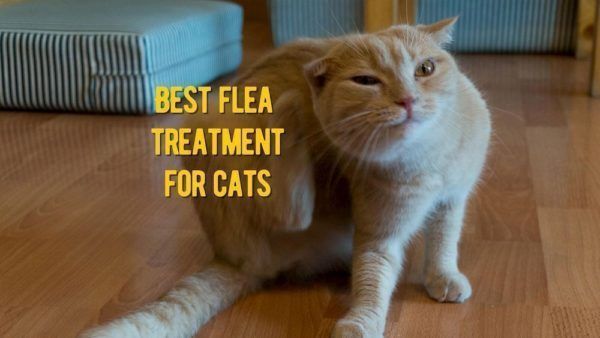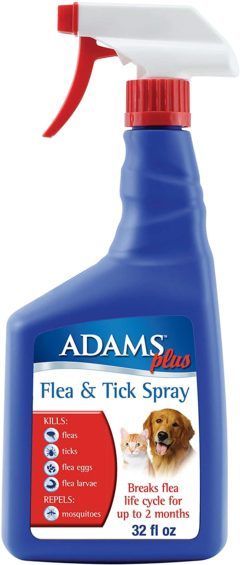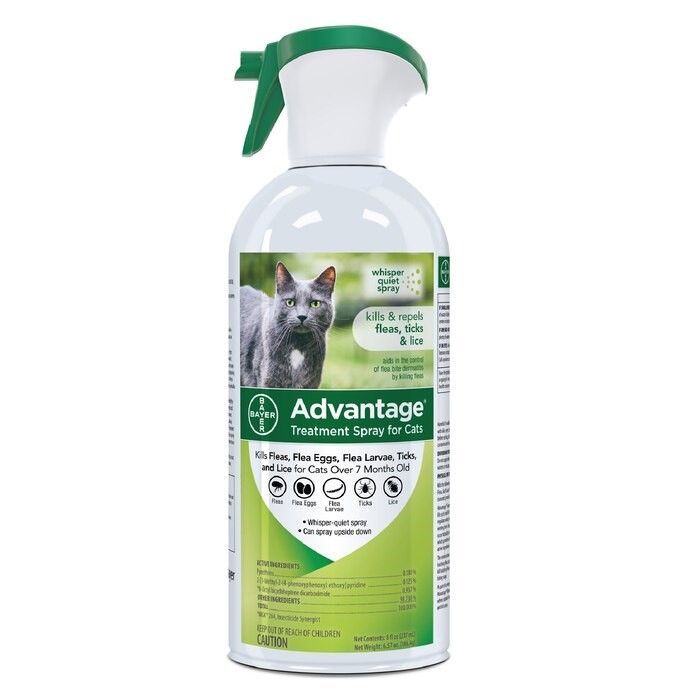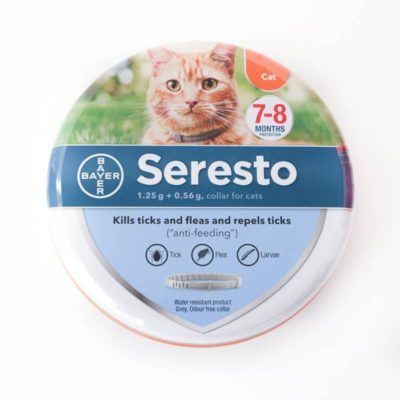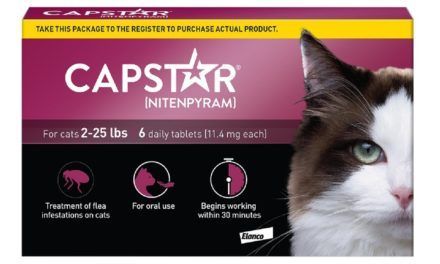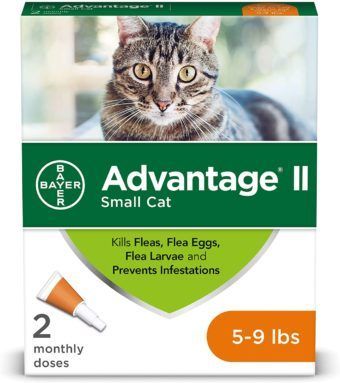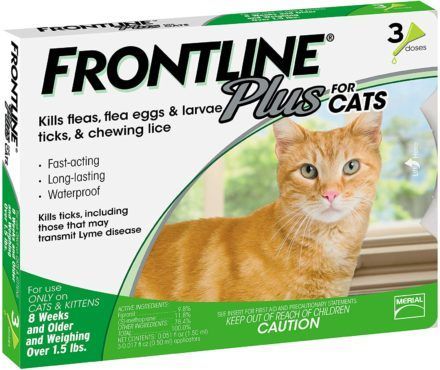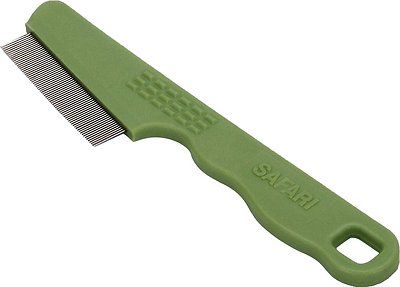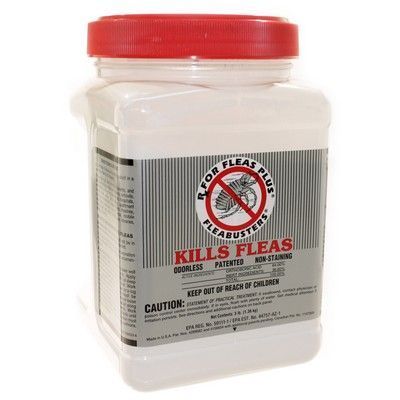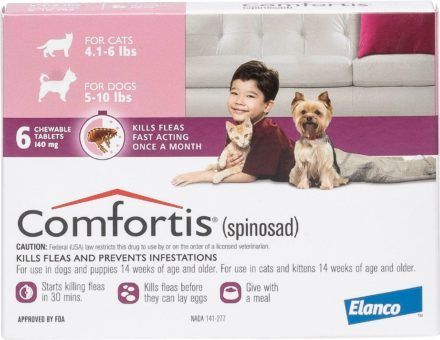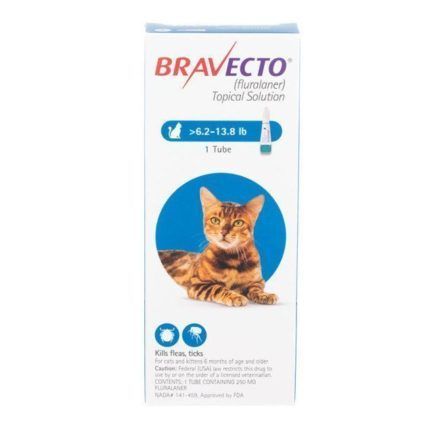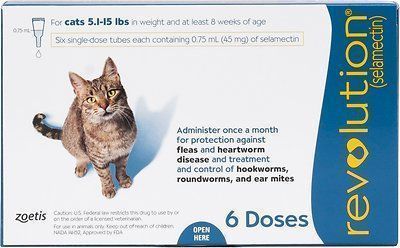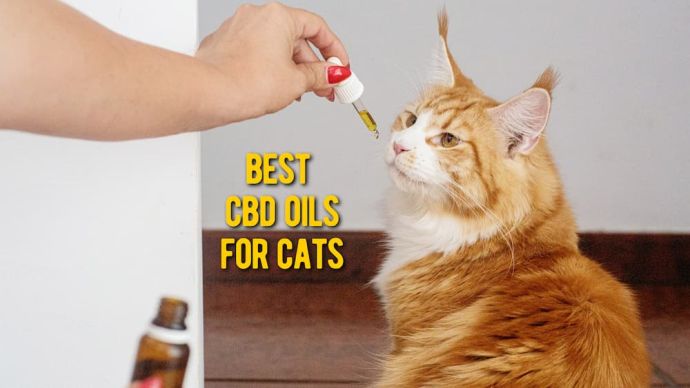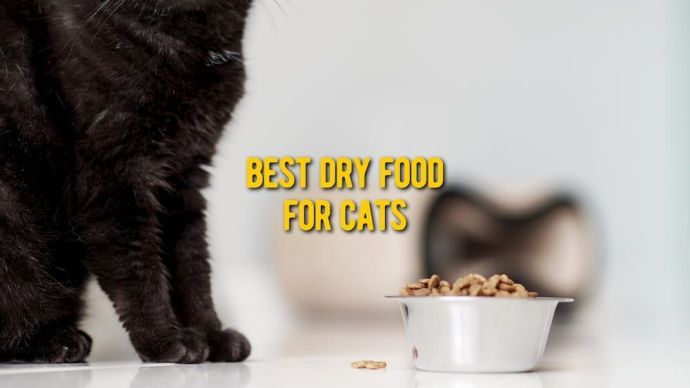The Best Flea Treatment for Cats (Vet Review)
Written by:
Author: Dr. Chyrle Bonk
Dr. Chyrle Bonk is an associate veterinarian since 2010 and was a volunteer for Clearwater County Youth 4H. Dr. Bonk contributed to various animal and veterinary related websites and magazines as a way to help keep animals across the globe safe and healthy. When Chyrle not working she spends her time with her own furry crew of dogs, cats, and horses.
View all 10 articlesLearn about our editorial process and veterinary review board.
Viewed: 1009
Updated on: 08/30/2022
When it comes to looking after a cat, you should always be keeping an eye out for the tell-tale tick and flea signs. Cats that walk around outside are always more likely to pick up fleas, but felines can become infected with pests throughout their lives. Whether it be brushing up against another dog or cat or perhaps picking up fleas at a local vet or boarding facility, the risk is always just around the corner. Believe it or not, fleas can even hitch a ride on your clothes and shoes before transferring to your cat.
Once your furry friend is hit with fleas, you should be able to diagnose them through visual cues alone. Scratching, skin irritation, discomfort, and dark red or black specks on the skin, bedding, or furniture can give the game away. Some cats do not need to have a flea infestation to have clinical symptoms. They only need one bite to come out in an allergic reaction. This is called flea allergic dermatitis (FAD) and commonly looks like itchy scabs at the base of the tail and top of the back.
Once you notice any of the above signs, you should run a comb through your pet’s fur to check for any pests. You won’t always find a live flea on the body, because 95% of fleas live off of the body. More often, flea dirt is noticed, which looks like small black specks. This can be confirmed by putting the specks on a white kitchen paper towel and placing a drop of water on it. Then if it is flea dirt, it will stain the paper red/brown because of the blood in it. If you find the traces of any fleas, whether it be live fleas or flea dirt, you should look to begin treatment as soon as possible.
Treatment is not often effective as a once-off application, as flea treatments do not kill eggs. Therefore, treatment needs to be repeated for several months to ensure that all the fleas hatching from the eggs are killed. Treatment of the house is also very important, as, as mentioned before, 95% of fleas live in the environment.
The Best Flea Cat Medicine for Cats Reviews
Shopping around for the most suitable flea remedy for cats can be challenging. Cats ALWAYS need a cat-specific flea product, as some dog products are toxic to cats. Luckily for you, we have compounded all great products and manufacturers on the market right now. Check out our favorite choices below.
The Best Sprays
One of the quickest and the great flea medication treatments, ticks, and lice is the popular spray solution. The whole body needs to be covered in the spray to ensure it is fully effective, but in particular, the belly, neck and inner-leg areas should be concentrated on. If you are looking for an effective spray treatment that is guaranteed to target the pests and eradicate them, look no further than the Adams Plus Flea and Tick Spray or Bayer Advantage Flea Tick and Lice Treatment Spray for Cats.
1. Adams Plus Flea and Tick Spray
This cat spray is easy to apply straight onto your pet’s coat, killing fleas, eggs, larvae, and ticks in the process. Not only that, but this product also soothes your cat’s skin in the process. It is effective for up to two months while also being one of the cheapest quality options on the market.
2. Bayer Advantage Flea Tick and Lice Treatment Spray for Cats
This product is an effective spray for defeating ticks, fleas, and lice on your cat’s fur. While the smell emitted from the solution is rather pungent, it certainly gets the job done.
The Best Shampoo
One of the most tried and tested methods for removing fleas is with specialized shampoo. The formula within the shampoo is specifically designed to kill any fleas, ticks, or lice that come into contact with your cat’s fur or skin. What’s more, the vast majority will also leave your pet smelling fresher than ever. All you have to do is keep your cat still and calm enough to apply the shampoo, leaving it on the fur for the prescribed amount of time-based on the instructions, before rinsing it off in the water, just as you would use shampoo on your own hair. Your cat’s reaction to the shampoo treatment will largely depend on how much they like or detest getting wet. However, some cat shampoos can see dead fleas fall out of the fur within minutes of use. Natural Chemistry De Flea Shampoo is an excellent option.
1. Natural Chemistry De Flea Shampoo
This shampoo option is free from pesticides and chemicals but still boasts the ability to kill fleas, their eggs, and larvae. Not only that, but the product is also designed to soothe and moisturize your cat’s skin and coat in the process.
The Best Collar
Not every cat is open to accepting tablets and ointments, which can make dealing with fleas extremely difficult. However, there is now a way to treat your feline friend without subjecting them to something they are not used to. All domesticated cats should have a collar, usually containing information regarding their name and address. These collars have now emerged as efficient options for cat treatment over long periods of time. The active ingredients within the collar are released in low doses over days, weeks, and months. This odorless and non-greasy formula offers protection against fleas, killing any that come into contact with the cat’s skin. While you must be careful when shopping around for collars, avoiding those that contain harmful chemicals, Bayer Seresto Flea and Tick Collar comes highly rated.
1. Bayer Seresto Flea and Tick Collar
The Seresto cat collar is the perfect alternative for any cat owner who is struggling to get their feline to consistently take tablets or sit still for other treatments. This product from Bayer is effective for eight months, representing real value for money. The formula used offers continuous protection over this time, without producing odors or grease. Some pet owners avoid purchasing collars due to the bad reputation they have, but this product is great.
The Best Medications
Cat medication comes in all shapes and sizes, with varying benefits to your feline friends. Cat tablets can be ingested by your pet to provide a fast-acting single-dose defense against fleas, ticks, and lice. While tablets are not seen as a long-term solution, they can show results in mere hours, making your cat far more comfortable in the short term. It is always sensible to pair pill usage with another more long-term treatment. Tablets are to be administered orally. However, not every pet is as willing to take them as others. If your cat continuously fights you on the subject, it may be suitable to look for another treatment form. But what is the most suitable one? We believe that the right tablets on the market right now are the Novartis Capstar Flea Tablets. However, Capstar tablets have no residual protective effect, and therefore if you do not also treat your house, the fleas will jump right back on your cat again.
1. Novartis Capstar Flea Tablets
These tablets are some of the most effective and fast-acting on the market. A single dose can kill fleas within six hours. However, it should be pointed out that Capstar tablets must be paired with another form of long-term treatment as they only kill adult fleas. They also rely on your cat being open to taking oral tablets.
2. Bayer Advantage II Flea Prevention for Cats
If your cat is against the taking of tablets, you can still source various other solutions aimed at targeting their skin and/or fur instead. A popular alternative to the tablet is the set-and-forget type solutions, or drops. The owner simply applies the solution to the neck of the cat and it gets to work within 12 hours, without the fleas even having to bite the skin. For those looking for this kind of product, we strongly recommend the top-selling product. Not only does it protect for up to four weeks, but it also kills larvae and eggs and remains waterproof and fragrance-free.
This set-and-forget solution starts working in just 12 hours but remains effective for up to four weeks. It is simple to use, with owners having to apply it to the cat’s neck alone. It is also odorless, waterproof, and kills adult, larvae, and flea eggs.
3. Frontline Gold/Plus for Cats
Frontline Gold/Plus for Cats is also brilliant and is a highly recommended remedy/repellent that gets to work in just 30 minutes, while also being safest for 8-week-old and 3 lbs cats.
This well-known brand is one of the more expensive options on the market but it comes with the recommendation of many veterinarians. From our experience, the vast majority of pet owners also find the product to be effective. It is easily applied using the in-pack applicator, kills ticks, fleas, and chewing lice, starts working in just 30 minutes, comes with a six-month supply, and is suitable for cats over 3lbs. The only downside at all is the price, although it remains worth every penny.
The Best Comb
When lice infect a child’s hair, the nit comb is often one of the first ports of call for any parent. This is no different for your cats. There are plenty of effective combs on the market that do the exact same job as these tried-and-tested nit combs. A comb should be a standard part of any prevention kit, no matter what other measures you are taking. Even if you kill the vast majority of fleas with a solution or shampoo, you will still need to brush the dead pests out from your feline’s coat. Combs are designed to pull every adult flea from your cat’s fur without causing any discomfort. Chances are, your cat will actually enjoy the process, much like enjoy being stroked and scratched. While combing your furry friend, focus on the areas around their ears, neck, and tail. It can also be a good idea to dunk the comb into hot water whenever you catch a flea in order to kill it off quickly. When looking for a brand-new comb, we cannot recommend the Safari Flea Comb for Cats highly enough.
1. Safari Flea Comb for Cats
No matter what form of spray, shampoo, or tablet you use in the fight against fleas, a comb is an absolute must-have. Once the fleas, ticks, and lice are killed, they must still be brushed out of your cat’s fur. However, the comb can also be used to catch and kill live pests when dipped in hot water, without causing any discomfort.
The Best House Treatment
Unfortunately, if you are truly looking to control and eradicate the fleas, ticks, and lice from your home, you will often need to treat far more than just the cat itself. Even if you have treated the cat and brushed the fur from top to bottom, you have still left one place untouched; the area where your cat lives. You can purchase solutions online that are proven to kill off fleas, ticks, lice, and other bugs, and some even have residual action. You have to be very careful about which one you buy, as many household sprays contain permethrin, which is toxic to cats. Out of all the products on the market at the moment, we recommend the Black Flag Flea and Tick Spray Home Treatment as the most effective. They also have a yard treatment version for the complete blitzing of the environment. Fleabusters RX for Fleas Plus Powder is also an excellent alternative. When applying, it is very important that your cat does not walk on the area until it is dry, and you should never use a household spray directly on your pet.
Before spraying, for the most effective results, vacuum the carpets and upholstery, especially in those dark, warm places which fleas love.
1. Black Flag Flea and Tick Spray Home Treatment
Black Flag is available in a spray or aerosol for your home. It is also available in a yard treatment form. Ideal for killing fleas, their eggs, larvae and ticks in carpets, upholstery, rugs, baseboards and moldings. It also contains an insect growth regulator which prevents fleas from developing into adults for up to seven months. You must keep your pets off the area sprayed until it is dry, but it is an excellent way of getting on top of flea infestations.
2. Fleabusters Rx for Fleas Plus
Fleabusters is a powder which has been milled extremely fine, which you sprinkle over your carpets and furniture. It clings to fibers to resist being removed when the vacuum is used, and provides protection for a whole year. It has both federal and state EPA registration and is safe for all family members, including pets.
Prescription Flea Treatments
If you’re looking for something a little harder-hitting, for example, if your cat has been struggling with fleas for a while or wants a long residual, protective action from a product, it is great to opt for a prescription product. These are available directly from your veterinarian, or from an online veterinary prescription website if you hold a prescription from your vet. There is no ‘the best’ prescription product, as it depends on situation and needs. Comfortis for Cats is a tablet option, and then there are topical pipettes such as Bravecto Topical for Cats and Revolution for Cats.
1. Comfortis for Cats
Comfortis is a chewable tablet for dogs and cats which contains the prescription drug Spinosad. It starts working in just 30 minutes and provides residual prevention for up to one month. It is ideal for cats who do not like to be washed, and families with little children who don’t understand that they must not pet the cat after applying a pipette treatment.
2. Bravecto Topical for Cats
Bravecto is the perfect treatment for pet owners who don’t want to have to keep remembering to apply flea treatments. It contains a prescription drug called fluralaner. One application of the pipette to the skin on the back of the neck provides 12 weeks of protection against fleas and ticks. It is also available in a form that protects against heartworms and intestinal parasites too, known as Bravecto Plus.
3. Revolution Plus
Revolution is a spot-on pipette which can be applied to the skin on the back of the neck every 30 days. It contains a prescription drug called selamectin which prevents against fleas, heartworms, ear mites, roundworms and intestinal hookworms. It is also available as Revolution Plus which also adds protection against ticks.
*Ratings are formed by the author of the article based on own research and combined with customer reviews.
Last words
That concludes our list of the best flea treatments on cats. All information was compiled from personal experiences, expert knowledge, and consumer reports. Follow the above advice and your cats and kittens should remain healthy and free from fleas.
FAQ
What are signs that my Cat has Fleas?
With severe flea infestations, you may actually see the little buggers jumping around on your kitty, especially in those thinly haired areas like between the hind legs and face. They’re small- less than 1/8 of an inch long- brown, and quick so you may have to watch for a while to catch a glimpse of one, but actually seeing fleas is, of course, the most obvious sign that your cat has them. Try combing the hair from the base of the tail forward with your hand or a brush to rouse them.
Most of the time, for milder infestations, your kitty will actually groom enough to remove most of the visible fleas. This makes it a little harder to tell for sure if fleas are a problem, but you may still notice the flea dirt, which is the digested blood that fleas leave behind, and simply looks like small, dark brown dirt flakes peppered throughout their hair. You may also see, or feel, red bumps on their skin where the fleas have caused irritation, especially in the area above the base of the tail and at the base of the neck.
Behaviorally, your kitty may be more irritated or restless than usual and may jump up, run around, and nip or chew at areas of their skin as if they are losing their mind. You may notice more scratching or excessive grooming as an effort to get some relief. For severely infested kitties, or those that some flea allergies, they might lose sleep and have a decreased appetite because of fleas.
How do you check a Cat for Fleas?
In those severely infested felines, you may see the adult fleas as they jump around on your kitty. This will be most obvious in the thinner haired parts of their body, like the face, armpits, or groin area. You may also feel or see small bumps at the base of the tail or neck where fleas have been causing irritation.
Since cats are fastidious groomers, they often snatch up those adult fleas before you get a chance to see them. Using a flea comb may help you draw some of those fleas out of hiding as well. Combs have very closely placed teeth that allow cat hair and not much else to pass through. Your veterinarian should have a comb or you may be able to find them at a pet supply store. Use it by combing your cat in long strokes from the base of the neck to the base of the tail and then inspect the removed hair for signs of adult fleas or dirt.
Another trick for those efficient groomers is to wet a paper towel and wipe your cat from head to tail. A damp paper towel does a pretty good job of picking up flea dirt-that digested blood feces that fleas leave behind-and helping to distinguish it from regular dirt specks. When wet, flea dirt will appear dark red or reddish-brown, whereas dirt will stay black or dark brown. Even if you never find an adult flea, the presence of flea dirt is enough to confirm that your cat has fleas.
It’s also important to check all of the other critters in your household as fleas as easily shared. It’s fairly uncommon for only one animal to be affected. That goes for other dogs and cats and humans as well. If you’re noticing small red bumps on your skin, chances are your cat also is getting bitten.
Finally, see your vet if you’re at all concerned. They will be able to help you determine your cat’s flea status.
How do you Get Rid of Fleas on Cat naturally?
Finding fleas may be difficult, but it’s actually the easy part in the whole infestation scheme. Treating them can be a whole different story. In this day and age, there are plenty of chemical treatments that work well to get rid of fleas, but they also may have some unwanted side effects making more and more cat parents look to natural treatments. Fortunately, many natural treatments are probably in your home right now.
- Diatomaceous earth: This is a silica powder, basically crushed up sand, that can be sprinkled on carpets, furniture, etc, and will kill fleas by dehydrating them. It can then be vacuumed up after a couple of hours. Some people even use it on their pets, but like any dusty powder, it can irritate airways and dry skin, so this method is really not recommended.
- Vacuuming: Frequent vacuuming is a great way to clean your home of fleas. This means vacuuming carpets, furniture, rugs, drapes, everything possible daily in order to get rid of as many adult fleas and eggs as possible. Sprinkling your vacuumable areas with salt or baking soda will increase your effectiveness by dehydrating any live fleas, making them easier to suck up.
- Citrus sprays: Citrus extract is a potent flea killer for furniture and other household objects. Boiling one thinly sliced lemon in two cups of water is all you need to make it. Put that in a spray bottle and dampen all vacuumable areas.
- Rosemary: Rosemary is a natural flea repellent. It can work well in mild infestations to repel fleas from your cat and home. Powder with rosemary with other herbs, such as peppermint, fennel, or wormwood, and then sprinkle on your cat, beds, carpets, etc. It doesn’t kill fleas, so it won’t work well on moderate or heavy infestations.
What is the fastest way to Get Rid of Fleas?
The quickest way to get rid of fleas effectively usually involves some sort of chemical treatment. Rest assured, that veterinary recommended products are much safer than they used to be and than over-the-counter treatments. When used correctly, these products shouldn’t cause any problems. Of course, there are always the exceptions, usually cats with underlying health concerns, so speak to your veterinarian before using any flea treatment product.
There are oral treatments that kill fleas within 30 minutes! However, if you’ve ever had to give a cat a pill, even a flavored one, this might not be your the great option. Most topical flea treatments that you squeeze onto the skin on the back of the neck will kill all fleas within in 24 hours and last for up to 30 days. If you want quicker still, look into sprays that will kill fleas in less than an hour. These sprays usually have no residual effect, so you’ll need to make sure to get rid of fleas in your house in the meantime.
For a longer acting flea solution, there are many safe collars on the market that are effective for up to eight months. These collars come in both chemical and natural versions, just be careful with cats that go outside as collars can get hung up on things and injure your cat.
Natural flea remedies are great for your health and that of your cat, but they tend not to work as quickly. So, if timing is an issue, a chemical alternative is your the best bet. Just be sure to use according to the manufacturer’s recommendations and under the direction of your vet.
How can you Prevent Fleas on Cats?
Fleas have to have a warm body, so keeping your kitty away from other critters is the right way to prevent an infestation. This means dogs and cats alike, as although most fleas are species-specific, that doesn’t mean some won’t jump ship from a dog and onto your cat if given the opportunity.
If your cat ventures outside, you can protect your yard from errant fleas using natural or chemical premise sprays or powders. Wetting down the commonly used areas during the hot and humid times of the year may help keep flea populations down as well. You may also look into some flea repellent plants, such as lavender, spearmint, and chrysanthemums, to strategically place around your yard or in pots in your house to keep fleas at bay.
Using a monthly preventative may be necessary for those hard to control infestations. Fortunately, there are many products available that are both safe and effective to use month after month and will help keep fleas off of your cat even if they are in your home or yard. Constant checking will also be of benefit in order to catch a flea infestation before it becomes full-blown. Again, having a comb will help you with this at home or frequently visiting a groomer or veterinarian for a quick flea check will help you find them before they’re a problem.
Fleas are often a hot topic for cat parents and something that veterinarians often get quizzed about. And with good reason-no one wants to deal with an infestation, both for their feline friend’s sake and for other critters in the home, including people. So, for a little more on fleas, here are some frequently asked questions.
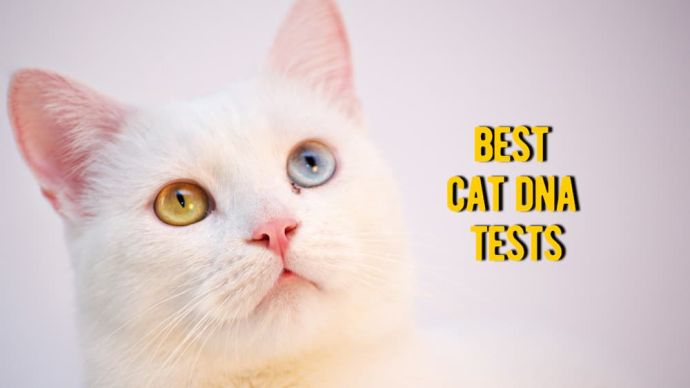 Cat Products & Toys Reviews The Best Cat DNA Tests: Cat Genetic Testing (Review)
Cat Products & Toys Reviews The Best Cat DNA Tests: Cat Genetic Testing (Review) - 247
- 0
 Cat Products & Toys Reviews Best Cat Harness: 10 Best Harnesses for Cats Review
Cat Products & Toys Reviews Best Cat Harness: 10 Best Harnesses for Cats Review - 282
- 2
 Best Pet Products Procana Cbd Review: Procana CBD Vet Formula Analysis and Overview
Best Pet Products Procana Cbd Review: Procana CBD Vet Formula Analysis and Overview - 158
- 0
 Cat Products & Toys Reviews Pretty Litter Review: Pretty Litter Cat Litter Reviews
Cat Products & Toys Reviews Pretty Litter Review: Pretty Litter Cat Litter Reviews - 452
- 0
 Cat Products & Toys Reviews The Best Automatic Cat Feeder: TOP Rated Auto Cat Feeders (Reviews)
Cat Products & Toys Reviews The Best Automatic Cat Feeder: TOP Rated Auto Cat Feeders (Reviews) - 958
- 3
 Dog Products & Toys Reviews The 10 Best Brush for Australian Shepherd: Review and Buying Guide
Dog Products & Toys Reviews The 10 Best Brush for Australian Shepherd: Review and Buying Guide - 13353
- 0









